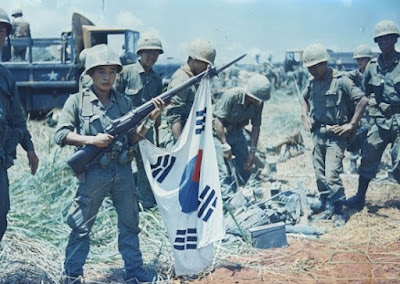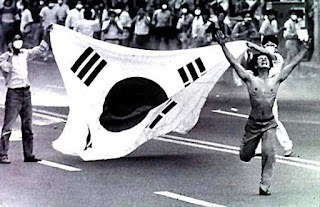Vietnam War - The Massacres of Vietnamese Civilians by the Korean Military
The Massacres of Vietnamese Civilians by the Korean Military
Cold War Global Climate and South Korea's Decision to Participate in the Vietnam War
During the height of the Cold War, the Vietnam War emerged as a crucial battleground in the global struggle between the forces of communism and the free world. Nations from every corner of the globe were pulled into this brutal conflict, each contributing troops, equipment, and political support to their chosen side. One of the nations that were significantly involved in supporting the U.S-led efforts in Vietnam was South Korea, under the leadership of President Park Chung-hee.
The geopolitical landscape and strategic considerations of the time heavily influenced South Korea's engagement in the Vietnam War. The primary motivation was the desire to secure and strengthen its alliance with the United States, which was a crucial source of military and economic aid. This was particularly critical given the persistent threat of communist aggression from North Korea during this period.
South Korea's Troop Deployment to Vietnam
South Korea dispatched a sizable force to Vietnam between 1964 and 1973, with more than 320,000 military personnel serving in the country throughout the conflict, thus becoming the second-largest foreign military contingent after the United States. The troops were primarily from the Republic of Korea Army (ROKA) and the Republic of Korea Marine Corps (ROKMC), organized into various divisions and brigades such as:
- The Capital Division (Tiger Division)
- The 2nd Marine Brigade (Blue Dragon Brigade)
- The 9th Infantry Division (White Horse Division)
Commanding these significant forces were several key Korean military leaders. Major General Chae Myung-shin was the commander of the Republic of Korea Forces in Vietnam from 1965 to 1969. He was succeeded by Lieutenant General Lee Sei Ho, who served from 1969 to 1972. The last commander to take charge was Lieutenant General Lee Joon Shik, who presided until the final withdrawal of South Korean troops in 1973.
The Massacre of Vietnamese Civilians by the Korean Military
However, the narrative of South Korea's involvement in the Vietnam War extends beyond military units and commanders. It delves into the stark realities of war, including the atrocities committed against innocent civilians. Allegations of war crimes perpetrated by South Korean troops have been a source of enduring tension and controversy between South Korea and Vietnam for decades.
Two of the most notorious atrocities attributed to South Korean troops include the Phong Nhị and Phong Nhất Massacre and the Hà My Massacre. Both incidents unfolded in 1968 in Quang Nam Province, Vietnam, and resulted in the deaths of hundreds of Vietnamese civilians.
On February 12, the Phong Nhị and Phong Nhất Massacre reportedly led to the deaths of between 69 and 135 unarmed civilians, with women, children, and the elderly making up the majority of the victims. Just 13 days later, on February 25, the Hà My Massacre occurred, with a reported death toll ranging from 135 to 504 Vietnamese civilians. Once again, the victims were primarily non-combatants, tragically illustrating the ruthless nature of war.
Evidence of these atrocities has emerged over time, including survivor testimonies, mass graves, reports from Vietnamese officials, photographs, and journalistic investigations. Moreover, some South Korean veterans have acknowledged and apologized for these and other atrocities committed during the conflict.
Nevertheless, these incidents remain sources of ongoing historical, political, and social controversy, primarily due to the lack of comprehensive, systematic, and formal inquiries into them. Despite the wealth of evidence pointing towards the occurrence of these atrocities, debates persist over the precise number of casualties, the specific circumstances surrounding each incident, and who bears the ultimate responsibility for these atrocities.
In 2023, a court in Seoul ruled that South Korean marines were guilty of committing a massacre of unarmed villagers during the Vietnam War and ordered the South Korean government to compensate one of the Vietnamese victims3.
On May 24, 2023, a meeting took place to determine whether to launch an investigation into the Hami Village massacre at the Past History Organization Committee for Truth and Reconciliation in Korea. The case was met with controversy, making it the first issue to undergo a vote by the Truth and Reconciliation Committee.
Out of the seven committee members, four determined that the case involving foreigners killed during the Vietnam War did not fall within the purview of their investigation according to current law, thus, the case was dismissed. Based on the majority opinion, under existing law, the scope of the Truth and Reconciliation Committee's investigations is limited to incidents involving the Korean people
These dreadful episodes underscore the horrors of war and the paramount importance of adhering to international law and human rights, even amidst conflict. The acknowledgment of these incidents and the pursuit of truth, justice, and reconciliation are not only crucial for the nations directly involved, but they also hold significant implications for the global community as we strive to prevent such atrocities from recurring in the future. It's important for us to remember and learn from history. Only by acknowledging past mistakes can we work towards ensuring they are not repeated. This sobering slice of history about South Korea's involvement in the Vietnam War serves as a poignant reminder of this, emphasizing our collective duty to uphold human rights and maintain peace.




Comments
Post a Comment